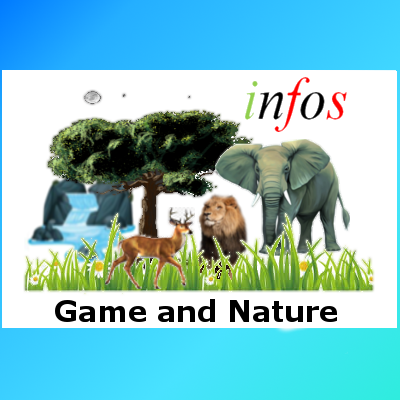What you need to know about Jinan
Jinan, the capital of eastern China’s Shandong province, is a sprawling city known for its many natural springs, most prominent being the park-enclosed Baotu Spring. Near the city center, expansive Daming Lake has landscaped islands and parkland with temples and pavilions. The modern Shandong Museum displays a huge collection of provincial artifacts, spanning the Neolithic Longshan culture to the Ming dynasty.
population of 9.2 million
Currency
-
Shenyang Currency Exchange. Chinese Yuan (also known as Renminbi, rmb for short) is the official and legal currency in circulation. Use of foreign currencies is generally not allowed.
Language
Health systems
Economy
Jinan’s GDP totaled 1.14 trillion yuan ($179.83 billion) in 2021, up 7.2 percent from that in 2020. General public budget revenue amounted to 100.76 billion yuan, while government expenditures totaled 129.31 billion yuan.
Transportation
As an important transport hub and logistics center, Jinan is a critical junction on the axis of the Beijing-Shanghai Economic Development line and Bohai Sea Economic Zone, connecting with Beijing and Tianjing in the north, and with Shanghai and Ningbo in the south, and joining Shandong Peninsula with the Central Plains from east to west. Jinan airport is an approved international airport, with an annual capacity of 10 million passenger trips. It connects more than 30 major cities on the mainland and Hong Kong and other international cities such as Seoul, Singapore, Osaka, Los Angeles, San Francisco and Frankfurt.
Railways and highways connect to Beijing and Tianjin in the north, Nanjing and Shanghai in the south, and Qingdao and Yantai in the east. A 4000-kilometer-long highway network links the city with the Beijing-Shanghai railway, the Beijing-Fuzhou highway, Qingdao-Yinchuan highway. Jinan is not only the interchange for the Beijing-Shanghai and Jiaozhou-Jinan railways, but also is a major stop on the Beijing-Shanghai high-speed railway.
With a developed economic zone of 500 sq km and a population of 300 million, Jinan has shaped into a “half-day economic zone” and “one-day economic zone”.
Tourism
Renowned for its numerous springs, Jinan is also an excellent tourism, historical and cultural city. Travelling in Jinan, you can view the “number one spring”, Baotu Spring, visit the “world’s wonder”, Baimai Spring, and appreciate “spring and weeping willows in every household” in the streets of the ancient city. After enjoying the 72 famous springs, you can follow the ancient steps and experience traditional Chinese civilizations along the Yellow River, at the Great Wall of the Qi Dynasty (479-502), Lingyan Temple, Daming Lake and Qianfo Mount.
With the Water Tour System of “stressing the city’s charm, highlighting the springs’ features”, Jinan connects Jiefang Cabinet, Heihu Spring, Quancheng Square, Baotu Spring Garden, Wulongtan Garden and Daming Lake together, traveling by road and boat to achieve “one boat traveling in Jinan, viewing the Spring City in city-round navigation”.
As an international city opening to the outside, Jinan is an attractive tourist city with convenient traffic, prosperous trade and outstanding service facilities.
Culture
With such a long history, Jinan has given birth to talented people from generation to generation. Historical celebrities born in what is now Jinan include: Bian Que (real name Qin Yueren), a famous traditional Chinese medicine doctor in the Warring States Period (475 BC-221 BC); Zou Yan, an ancient philosopher best known as the representative thinker of the Yin and Yang School and the Five Elements in the Warring States Period; Fu Sheng, a scholar of the Han Dynasty (202 BC-220) who dictated 28 articles of The Book of History; Zhong Jun, a diplomat of the Han Dynasty, who took the initiative to negotiate with the Nanyue Kingdom and making contributions to the reunification of the country; Du Fuwei and Fu Gongshi, leaders of a peasant uprising in the late Sui Dynasty (581-618); politician Fang Xuanling; a famous general Qin Qiong; eminent monk Yijing (original name Zhang Wenming) in the Tang Dynasty (618-907); two Song Dynasty (960-1279) poets Li Qingzhao and Xin Qiji; Sanqu poets of the Jin and Yuan dynasties (1115-1368), Zhang Yanghao and Du Renjie; Zhang Qiyan, editor-in-chief of three official history books of the Song, Liao and Jin dynasties (960-1234); Ming Dynasty (1368-1644) litterateurs Bian Gong, Li Panlong, Li Kaixian and Yu Shenxing; classicist Zhang Erqi; Zhou Yongnian, chief compiler of Siku Quanshu (The Emperor’s Four Treasuries); philologist Ma Guohan in the Qing Dynasty (1644-1911); and Meng Luochuan, a national industrialist in modern times.
City Tree and City Flower
The City Tree is the willow, and the City Flower is the lotus. Willows and lotuses create beautiful scenery in Jinan. As a famous poem says “Lotus everywhere, three sides of willows in there, a city of mountains and a half town of lake”.
Resources and Specialties
Jinan is rich in mineral resources: iron, coal, granite, refractory clay, copper, potassium, platinum, cobalt, a variety of non-ferrous metals, rare metals and non-metallic resources. There are two kinds of forest resources, trees and shrubs, with more than 60 branches and 300 types. The southern mountains abound in apple, pear, persimmon, walnut, hawthorn, chestnut, as well as traditional medicines like polygala, salvia, daisy and cyperus. Large quantities of jujube grow well in the north Yellow River Plains. Jinan is also rich in planting and breeding resources, with many kinds of food crops and cash crops, as well as poultry, livestock and aquatic products.
Religion
Chinese citizens enjoy the freedom to believe or not to believe in a religion. Believers in Christianity, Buddhism (including Tibetan Buddhism or Lamaism), Taoism and Islam can be found in Jinan, and there are many religious places, where people worship legally.










